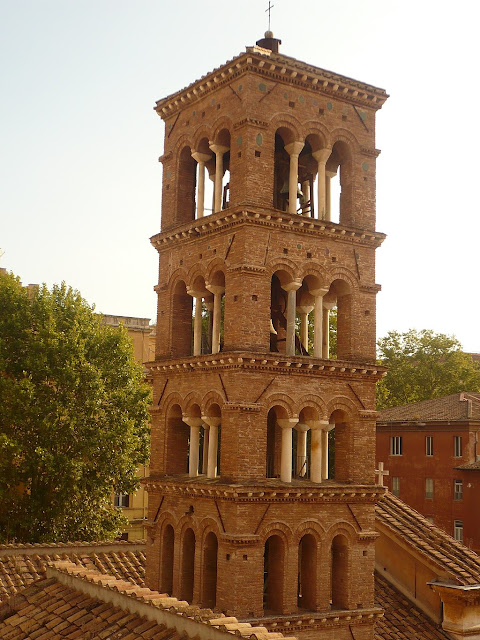Having considered the basilica of Santa Prassede (Praxedes), we now turn to the basilica named after her sister, Santa Pudenziana (Pudentiana). The basilica in question was founded originally in the fourth century and is considered one of the oldest places of Christian worship in Rome -- having originally been erected by Pope Pius I (140-155) over a second century Roman house and private bath. Here following are a few illustrations to help readers understand this arrangement.
 |
| The remains of the Roman bath of Pudens found beneath the basilica. |
In fact, the house was also to become the original residence of the pope until the Emperor Constantine offered the Church the Lateran for this purpose. So it was then that the former papal residence was transformed into a basilica at this point of time.
Like many of these paleo-christian structures, it sits beneath the modern day street level of Rome, sitting at the level of the street as it was found in these earlier centuries.
The church boasts a thirteenth century, Romanesque bell-tower, like so many of the important basilicas in Rome.
The marble architrave above the main door hails from the eleventh century and depicts the original owner of the property as well as S. Pudentiana and S. Praxedes (with the Agnus Dei between them), and lastly their father, Pudens.
 |
| S. Pudenziana |
 |
| S. Praxedes |
The interior of the basilica is relatively 'normal' as Roman standards go, however there is one notable exception to this that alone makes the basilica worth a visit: the great paleo-christian mosaic found within the apse.
While it has been subject to various restorations over the centuries, particularly the sixteenth, it is dated to the latter part of the fourth century, marking it as one of the oldest extant mosaics of Christian Rome still in existence. Within it, the figure of Christ sits enthroned, robed in imperial gold and purple -- thereby emphasizing by imperial association the authority of Christ and His Church -- surrounded by his apostles who are vested in senatorial togas. Above the figures of Ss. Peter and Paul are held laurel wreaths; crowns of victory in the antique world. In short, the mosaic is replete with antique Roman associations re-invested with Christian purpose and meaning.
Regrettably, both S. Pudenziana and S. Praxedes were removed from the general liturgical calendar of the modern Roman rite, but they are still fortunately observed in the calendar of the usus antiquior, with the former's feast day being observed on May 19th and the latter, July 21st.










.jpeg)












